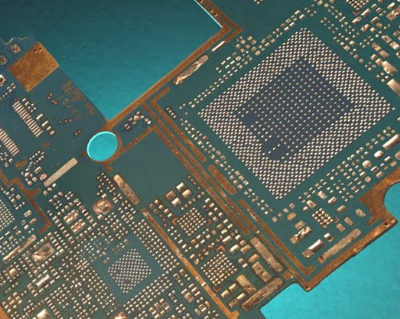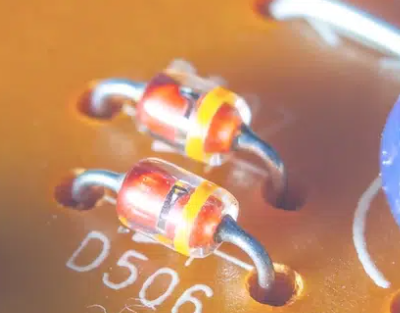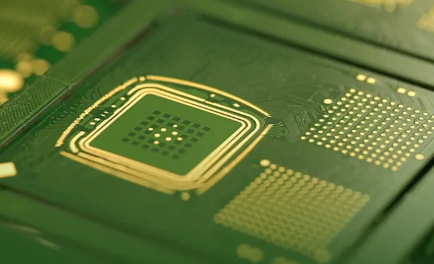What is PCB?What is IC?
PCB and IC are both essential components in the field of electronics, but they serve different purposes and have distinct characteristics. Let’s see what are the differences between PCB vs IC. Keep reading!

What is PCB?
PCB (Printed Circuit Board) is an important electronic component, a support for electronic components, and a carrier for electrical connections of electronic components. Because it is made using electronic printing, it is called a “printed” circuit board.
The current circuit board mainly consists of lines and patterns, a dielectric layer, holes (Through hole/via), a solder mask, and silkscreen, surface finish and other components.
Advantages of PCB1. High density: For decades, the high density of printed circuit boards has been developed with the improvement of integrated circuit integration and the advancement of mounting technology.
2. High reliability: Through a series of inspections, tests and aging tests, the PCB can be guaranteed to work reliably for a long time (usage period, generally 20 years).
3. Designability: For PCB various performance (electrical, physical, chemical, mechanical, etc.) requirements, printed board design can be realized through design standardization, with short time and high efficiency.
4. Productivity: Using modern management, it can carry out standardized, large-scale (quantity), automated and other production to ensure product quality consistency.
5. Testability: Relatively complete testing methods, testing standards, various testing equipment and instruments have been established to detect and identify the qualification and service life of PCB products.
6. Assemblability: PCB products not only facilitate standardized assembly of various components but also enable automated and large-scale mass production. At the same time, PCB and various component assembly parts can also be assembled to form larger components, systems, and even complete machines.
7. Maintainability: Since PCB products and various component assembly components are designed and produced in a standardized manner, these components are also standardized. Therefore, once the system fails, it can be replaced quickly, conveniently and flexibly, and the system can be restored quickly.
What is IC?
An integrated circuit is a miniature electronic device or component. Using a certain process, the transistors, resistors, capacitors, inductors and other components and wiring required in a circuit are interconnected together, made on a small or several small semiconductor wafers or dielectric substrates, and then packaged in a tube shell, into a microstructure with the required circuit functions. All the components are structurally integrated into a whole, making electronic components a big step forward in miniaturization, low power consumption, intelligence and high reliability. It is represented by the letters “IC” in circuits.
Integrated circuits can be divided into three categories: analog integrated circuits, digital integrated circuits and digital/analog hybrid integrated circuits according to their functions and structures.
Integrated circuits have the advantages of small size, lightweight, few lead wires and soldering points, long life, high reliability, good performance, etc. At the same time, they are low in cost and convenient for mass production.
PCB vs IC – what are the differences?
There is a close relationship between integrated circuits and PCBs. The integrated circuit is a whole, welded on the PCB circuit board, and the PCB is the carrier of the integrated circuit. Integrated circuits are the integration of chips, while PCBs are the electrical connections and supports on the circuit board.
Understanding of the relationship between the two: the integrated circuit (IC) is welded on the PCB board; the PCB board is the carrier of the integrated circuit (IC). To put it simply, an integrated circuit is a general-purpose circuit integrated into a chip. It is a whole. Once it is damaged internally, the chip will also be damaged. While PCB can weld the components by itself. If the components are damaged, they can be replaced.
在线留言询价

15 Common PCB Circuit Effects

What are diodes in the circuit board?
- 一周热料
- 紧缺物料秒杀
| 型号 | 品牌 | 询价 |
|---|---|---|
| TL431ACLPR | Texas Instruments | |
| BD71847AMWV-E2 | ROHM Semiconductor | |
| CDZVT2R20B | ROHM Semiconductor | |
| RB751G-40T2R | ROHM Semiconductor | |
| MC33074DR2G | onsemi |
| 型号 | 品牌 | 抢购 |
|---|---|---|
| ESR03EZPJ151 | ROHM Semiconductor | |
| TPS63050YFFR | Texas Instruments | |
| BP3621 | ROHM Semiconductor | |
| BU33JA2MNVX-CTL | ROHM Semiconductor | |
| IPZ40N04S5L4R8ATMA1 | Infineon Technologies | |
| STM32F429IGT6 | STMicroelectronics |
- 周排行榜
- 月排行榜
AMEYA360公众号二维码
识别二维码,即可关注
























